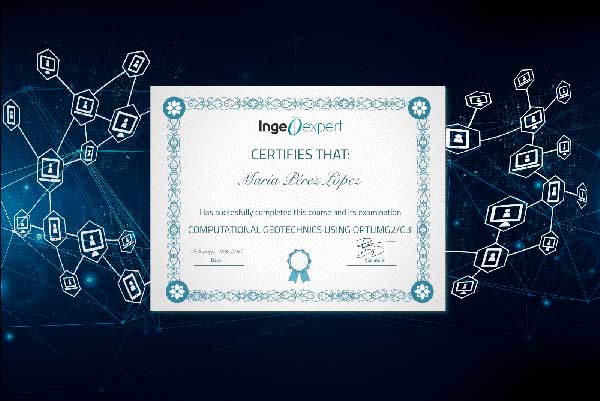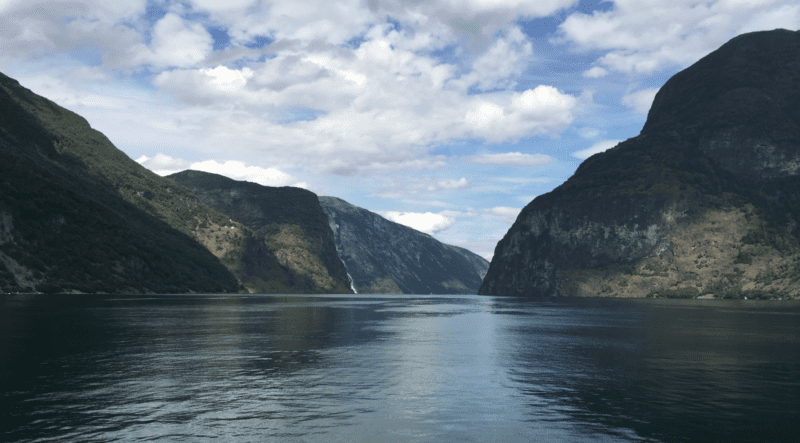Introduction to estuarine hydrodynamics
Online course |
|
50 hours / 6 weeks |
|
To be determined |
Introduction
There is an increasing need to understand the wide array of processes that occur in semienclosed coastal bodies of water, including estuaries. These systems appear sprinkled along coastlines throughout the world. Close to 75% (26 out of 35) of the largest cities in the world, in terms of population, are found in or influenced by estuarine systems.
A higher percentage has a direct impact on estuarine waters through river connections. Worldwide, estuaries serve various purposes: they help preserve freshwater resources in rivers by limiting saltwater intrusion; they provide habitat and nursey grounds for commercially and ecologically pivotal species; they act as river-related sediment and pollutant receptacles, hampering contamination in coastal waters; they enable tourism and recreational activities; they host harbors and related commercial activities like fishing; and they could potentially provide clean energy.
Threats from sea-level rise, from increased pollution, saltwater intrusion, freshwater consumption, and storm intensity, as well as threats from changes in river discharge are imminent in coastal regions. Therefore, we need to understand current conditions affecting semienclosed basins so that we can propose possible consequences to all of their functions (some of them mentioned above).
Objectives
This course is intended mainly as an introductory reference for researchers focusing on any aspect of estuarine studies, e.g., biological, biochemical, geochemical, geological, physical. More generally, the course is intended to those investigating all facets of semienclosed coastal bodies of water. The course shall provide information at a basic level, but perhaps moving up to an intermediate level in some parts. The course should provide fundamental concepts to interdisciplinary studies in these systems and to advanced hydrodynamics investigations. The core purpose of this course is to offer relevant concepts accessibly.
Module 1. Introduction
- – Definition of estuaries.
- – What is an estuary?
- – Classical views and more flexible definitions on “estuaries.”
- – Classification based on geomorphology; based on water balance; and based on water stratification.
- – More comprehensive classifications will be presented at the end, after understanding basic physical mechanisms in estuaries.
Module 2. Basic physical concepts
- – General review of hydrodynamics.
- – Review of conservation equations, starting from Newton’s second law: conservation of mass, momentum, heat and salt, setting the stage for nomenclature to be used throughout.
- – Equation of state.
- – Meaning of friction.
Module 3. Tides in semienclosed basins
- – Basic concepts on driving forces.
- – Main harmonics or constituents.
- – Spring and neap tides.
- – Tropic and equatorial tides.
- – Fundamental physics for a frictionless tidal wave.
- – Progressive and standing waves.
- – Resonance.
- – Effects of friction and Earth’s rotation.
- – Hyper, hypo and synchronic tides.
- – Amphidromic points.
- – Effects of lateral bathymetry on tidal flows.
- – Understanding theoretical solutions and examples.
Module 4. Shallow water tides
- – Tidal distortions and appearance of high frequency harmonics.
- – Interactions between harmonics.
- – Physical reasons for distortions.
- – Examples
Module 5. Residual flows from tides
- – Flows resulting from asymmetries or distortions in tides under homogeneous fluids (tidal stresses).
- – Mechanisms that generate them.
- – Flows in elongated and short basins.
- – Flows around points and curvature.
- – Theoretical and observational examples.
Module 6. Flows from density gradients
- – Flows driven exclusively by density gradients.
- – Fundamental physics.
- – Classic estuarine exchange.
- – Influence of lateral variations in bathymetry.
- – Theoretical and observational examples.
Module 7. Flows driven by wind
- – Wind-driven flows in homogenous fluids.
- – Fundamental physics.
- – Influence of lateral variations in bathymetry.
- – Theoretical and observational examples.
Module 8. Interactions tides-density-gradients-wind
- – Intratidal interactions between tides and density gradient: tidal straining.
- – Influence of along-estuary bathymetry: hydraulic jumps and local mixing.
- – Interactions between tides and density gradients at subtidal scales: fortnightly (synodic and declinational) variability.
- – Influence of tidally related advective accelerations on density-driven flows.
- – Lateral or secondary flows.
- – Competition between tidal stress and density-gradient in driving residual flows.
- – Competition between density gradients and wind forcing. Addition of tidal forcing.
- – Influence of river discharge.
- – Saltwater intrusion.
Module 9. Fronts
- – Spatial and temporal scales; vertical velocities possible at fronts
- – Plume fronts and tidal intrusion fronts
- – Shear fronts
- – Tidal mixing fronts
Module 10. Flushing and Residence Times
- – Distinctions among flushing or renewal time, residence time, age, and transit time.
- – Methods of calculation.
Module 11. Low Inflow Systems
- – Definitions.
- – Thermally driven estuaries.
- – Hypersaline but not hyperpycnal estuaries.
- – Hyperpycnal estuaries from temperature and from salinity fields.
- – Salt plug estuaries.
- – Ecological implications.
- – Implications on water and soil quality.
Module 12. Classification of semienclosed basins considering dynamics
- – Review of previous classifications on the basis of stratification vs net transport, and river discharge versus mixing/stratification.
- – Placement of semienclosed bodies of water in terms of flow drivers (tides and density gradient) and flow modifiers (Coriolis and friction).
Arnoldo Valle- Levinson
Professor at the University of Florida. Research interests concentrate on physical phenomena from rivers to oceans at diverse spatial and temporal scales. Has been visiting professor at universities worldwide. Appears in >200 peer-reviewed publications, is a Corresponding Member of the Mexican Academy of Sciences. An estuary in Chile was named in his honor: “estero Arnoldo.”
The course is delivered online through our easy-to-use Virtual Campus platform. For this course, a variety of content is provided including:
– eLearning materials
– Videos
– Interactive multimedia content
– Live webinar classes
– Texts and technical articles
– Case studies
– Assignments and evaluation exercises
Students can download the materials and work through the course at their own pace.
We regularly update this course to ensure the latest news and state-of-the-art developments are covered, and your knowledge of the subject is current.
Live webinars form part of our course delivery. These allow students and tutors to go through the course materials, exchange ideas and knowledge, and solve problems together in a virtual classroom setting. Students can also make use of the platform’s forum, a meeting point to interact with tutors and other students.
The tutoring system is managed by email. Students can email the tutor with any questions about the course and the tutor will be happy to help.
This course is intended mainly as an introductory reference for researchers focusing on any aspect of estuarine studies, e.g., biological, biochemical, geochemical, geological, physical. More generally, the course is intended to those investigating all facets of semienclosed coastal bodies of water. The course shall provide information at a basic level, but perhaps moving up to an intermediate level in some parts. The course should provide fundamental concepts to interdisciplinary studies in these systems and to advanced hydrodynamics investigations. Basic use of a data analysis software (e.g. Matlab) would be beneficial.
This course would be beneficial to all civil engineering practitioners and especially to those involved in the design, approval and maintenance of foundation engineering projects and any other structural and construction systems, such as: civil, municipal, environmental and construction engineers, consulting engineers, plans review personnel in municipalities, public works professionals, plant engineers, who are involved with building and construction works, technicians and specialists, geologists and earth scientists, civil engineers who want to understand foundations or any other load carrying soil-structure systems. The course will be of value both for those who are new to foundation engineering as well as to those who have experience with foundations.
Environmental Managers; government scientists; undergraduate students; graduate students; sustainability officers. Students or professionals in the following disciplines:
- – Oceanography
- – Hydrology
- – Environmental Science
- – Earth Science
- – Biology
Introduction
There is an increasing need to understand the wide array of processes that occur in semienclosed coastal bodies of water, including estuaries. These systems appear sprinkled along coastlines throughout the world. Close to 75% (26 out of 35) of the largest cities in the world, in terms of population, are found in or influenced by estuarine systems.
A higher percentage has a direct impact on estuarine waters through river connections. Worldwide, estuaries serve various purposes: they help preserve freshwater resources in rivers by limiting saltwater intrusion; they provide habitat and nursey grounds for commercially and ecologically pivotal species; they act as river-related sediment and pollutant receptacles, hampering contamination in coastal waters; they enable tourism and recreational activities; they host harbors and related commercial activities like fishing; and they could potentially provide clean energy.
Threats from sea-level rise, from increased pollution, saltwater intrusion, freshwater consumption, and storm intensity, as well as threats from changes in river discharge are imminent in coastal regions. Therefore, we need to understand current conditions affecting semienclosed basins so that we can propose possible consequences to all of their functions (some of them mentioned above).
Objectives
This course is intended mainly as an introductory reference for researchers focusing on any aspect of estuarine studies, e.g., biological, biochemical, geochemical, geological, physical. More generally, the course is intended to those investigating all facets of semienclosed coastal bodies of water. The course shall provide information at a basic level, but perhaps moving up to an intermediate level in some parts. The course should provide fundamental concepts to interdisciplinary studies in these systems and to advanced hydrodynamics investigations. The core purpose of this course is to offer relevant concepts accessibly.
Module 1. Introduction
- – Definition of estuaries.
- – What is an estuary?
- – Classical views and more flexible definitions on “estuaries.”
- – Classification based on geomorphology; based on water balance; and based on water stratification.
- – More comprehensive classifications will be presented at the end, after understanding basic physical mechanisms in estuaries.
Module 2. Basic physical concepts
- – General review of hydrodynamics.
- – Review of conservation equations, starting from Newton’s second law: conservation of mass, momentum, heat and salt, setting the stage for nomenclature to be used throughout.
- – Equation of state.
- – Meaning of friction.
Module 3. Tides in semienclosed basins
- – Basic concepts on driving forces.
- – Main harmonics or constituents.
- – Spring and neap tides.
- – Tropic and equatorial tides.
- – Fundamental physics for a frictionless tidal wave.
- – Progressive and standing waves.
- – Resonance.
- – Effects of friction and Earth’s rotation.
- – Hyper, hypo and synchronic tides.
- – Amphidromic points.
- – Effects of lateral bathymetry on tidal flows.
- – Understanding theoretical solutions and examples.
Module 4. Shallow water tides
- – Tidal distortions and appearance of high frequency harmonics.
- – Interactions between harmonics.
- – Physical reasons for distortions.
- – Examples
Module 5. Residual flows from tides
- – Flows resulting from asymmetries or distortions in tides under homogeneous fluids (tidal stresses).
- – Mechanisms that generate them.
- – Flows in elongated and short basins.
- – Flows around points and curvature.
- – Theoretical and observational examples.
Module 6. Flows from density gradients
- – Flows driven exclusively by density gradients.
- – Fundamental physics.
- – Classic estuarine exchange.
- – Influence of lateral variations in bathymetry.
- – Theoretical and observational examples.
Module 7. Flows driven by wind
- – Wind-driven flows in homogenous fluids.
- – Fundamental physics.
- – Influence of lateral variations in bathymetry.
- – Theoretical and observational examples.
Module 8. Interactions tides-density-gradients-wind
- – Intratidal interactions between tides and density gradient: tidal straining.
- – Influence of along-estuary bathymetry: hydraulic jumps and local mixing.
- – Interactions between tides and density gradients at subtidal scales: fortnightly (synodic and declinational) variability.
- – Influence of tidally related advective accelerations on density-driven flows.
- – Lateral or secondary flows.
- – Competition between tidal stress and density-gradient in driving residual flows.
- – Competition between density gradients and wind forcing. Addition of tidal forcing.
- – Influence of river discharge.
- – Saltwater intrusion.
Module 9. Fronts
- – Spatial and temporal scales; vertical velocities possible at fronts
- – Plume fronts and tidal intrusion fronts
- – Shear fronts
- – Tidal mixing fronts
Module 10. Flushing and Residence Times
- – Distinctions among flushing or renewal time, residence time, age, and transit time.
- – Methods of calculation.
Module 11. Low Inflow Systems
- – Definitions.
- – Thermally driven estuaries.
- – Hypersaline but not hyperpycnal estuaries.
- – Hyperpycnal estuaries from temperature and from salinity fields.
- – Salt plug estuaries.
- – Ecological implications.
- – Implications on water and soil quality.
Module 12. Classification of semienclosed basins considering dynamics
- – Review of previous classifications on the basis of stratification vs net transport, and river discharge versus mixing/stratification.
- – Placement of semienclosed bodies of water in terms of flow drivers (tides and density gradient) and flow modifiers (Coriolis and friction).
Arnoldo Valle- Levinson
Professor at the University of Florida. Research interests concentrate on physical phenomena from rivers to oceans at diverse spatial and temporal scales. Has been visiting professor at universities worldwide. Appears in >200 peer-reviewed publications, is a Corresponding Member of the Mexican Academy of Sciences. An estuary in Chile was named in his honor: “estero Arnoldo.”
The course is delivered online through our easy-to-use Virtual Campus platform. For this course, a variety of content is provided including:
– eLearning materials
– Videos
– Interactive multimedia content
– Live webinar classes
– Texts and technical articles
– Case studies
– Assignments and evaluation exercises
Students can download the materials and work through the course at their own pace.
We regularly update this course to ensure the latest news and state-of-the-art developments are covered, and your knowledge of the subject is current.
Live webinars form part of our course delivery. These allow students and tutors to go through the course materials, exchange ideas and knowledge, and solve problems together in a virtual classroom setting. Students can also make use of the platform’s forum, a meeting point to interact with tutors and other students.
The tutoring system is managed by email. Students can email the tutor with any questions about the course and the tutor will be happy to help.
This course is intended mainly as an introductory reference for researchers focusing on any aspect of estuarine studies, e.g., biological, biochemical, geochemical, geological, physical. More generally, the course is intended to those investigating all facets of semienclosed coastal bodies of water. The course shall provide information at a basic level, but perhaps moving up to an intermediate level in some parts. The course should provide fundamental concepts to interdisciplinary studies in these systems and to advanced hydrodynamics investigations. Basic use of a data analysis software (e.g. Matlab) would be beneficial.
This course would be beneficial to all civil engineering practitioners and especially to those involved in the design, approval and maintenance of foundation engineering projects and any other structural and construction systems, such as: civil, municipal, environmental and construction engineers, consulting engineers, plans review personnel in municipalities, public works professionals, plant engineers, who are involved with building and construction works, technicians and specialists, geologists and earth scientists, civil engineers who want to understand foundations or any other load carrying soil-structure systems. The course will be of value both for those who are new to foundation engineering as well as to those who have experience with foundations.
Environmental Managers; government scientists; undergraduate students; graduate students; sustainability officers. Students or professionals in the following disciplines:
- – Oceanography
- – Hydrology
- – Environmental Science
- – Earth Science
- – Biology
More info
Finish this course and get a certificate based on Blockchain
Introduction to estuarine hydrodynamics

Blockchain technology makes the certificate incorruptible, enabling companies to verifiy its autenticity.





Reviews
There are no reviews yet.